Sealant for sewer pipes: types, review of manufacturers, which is better and why
The tightness of the sewer system is one of the main conditions for the normal operation of this type of communications.The possibility of leakage must be completely eliminated so as not to pose a threat to nearby networks, structures and the environment.
Sealant for sewer pipes will prevent leaks - the product is used for both internal and external work. How does it work and which one is better to choose? Agree, it's worth finding out.
So that you can find and purchase a suitable sealant, we will identify the popular options and describe their specific use.
The article discusses in detail the technologies for using sealing materials. There is a rating of manufacturers of the best products produced for this area of construction. Photo applications and video reviews will help you get comfortable with the topic.
The content of the article:
The purpose of sealing system elements
The sewerage system is reliably sealed during the installation stage. During operation, the internal system is regularly inspected in order to detect and eliminate leaks in time.
Wastewater should not flow out, and nothing should get into the sewer system from the outside, because... this can disrupt its operation and lead to serious damage.
Particular attention should be paid to sealing pipes, laid underground, as they are much more difficult to repair if leaks occur.If the operation of the system is disrupted due to groundwater entering it, a lot of effort will have to be made to determine this.
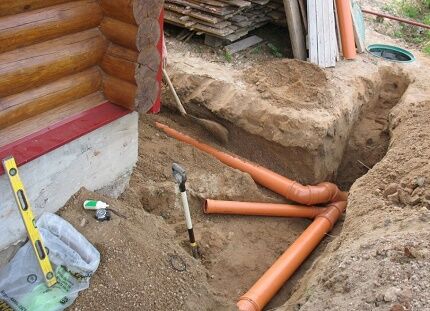
Careful sealing during the construction phase of the sewer system prevents a number of problems:
- Leaks to the outside. Once in the soil, wastewater can contaminate water in drinking wells and cause serious illnesses. Unpleasant sewer smell indoors is also dangerous, because rotting organic matter releases gases harmful to humans: hydrogen sulfide, ammonia, methane.
- Flooding of buildings and structures. In case of severe leaks, soil erosion may occur. Sewage water floods foundations, cellars, cellars, and basement floors. Due to the high content of chemically active substances, they accelerate the destruction of building materials and provoke corrosion.
- Leaks into the system. If atmospheric or groundwater enters the system, the pressure in the pipeline increases. Due to the strong pressure of wastewater, the operation of pipes is disrupted, and treatment or storage facilities may not be able to cope with the additional load and fail.
- Leaks at joints due to temperature changes. If the system is initially installed efficiently, the joints are reliable and do not leak even without additional sealing. However, processing is still necessary, because Temperature changes over time lead to a decrease in tightness.
For installation of sewerage systems use different types of pipe. A suitable sealant should be selected for each pipe material.The choice also depends on the installation technology and the intended purpose of each individual element of the system.
Main types of sealing materials
Many different materials are used to seal sewer pipe connections:
- sealing tapes;
- polymer sealants;
- technical sulfur;
- jute and hemp ropes;
- epoxy resin;
- Portland cement;
- mastics based on petroleum products;
- rubber cuffs.
Each sealing material has its own varieties, features, purpose and scope of application.
Option #1: Sealing tapes
There are regular and foil self-adhesive tapes. They are designed for sealing connections of water and sewer pipes and have unique properties. The tapes contain bitumen-polymer materials, making them absolutely waterproof.
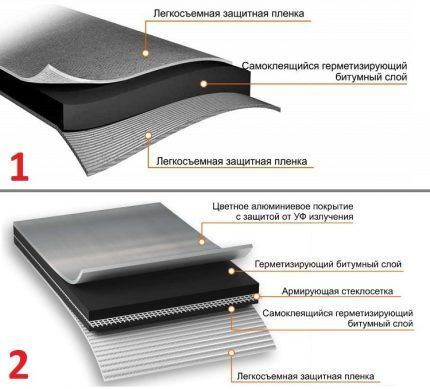
Depending on the operating temperature range, there are three main types of tapes:
- Summer (in the marking it is indicated by the letter L). The tape can be used at temperatures up to +300˚С. It is suitable for insulating pipelines through which hot liquids are pumped.
- Winter (marked with the letter Z). The temperature range at which the material does not lose its sealing properties is from -200˚ to +100˚С.
- Heat-resistant (the properties are indicated by the letter T in the marking). This tape is used to insulate pipelines through which liquids with temperatures up to +1500˚C are pumped. In this case, the ambient temperature can fluctuate from -100 to +300˚С.
For insulating sewer lines indoor pipes Summer or winter sealing tape is suitable, but for outdoor work it is better to choose winter tape.
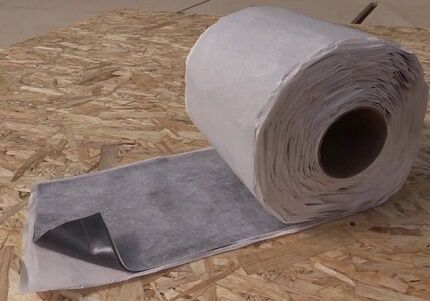
The advantages of the material include the following properties:
- No deformation. If the tape is applied correctly, no bubbles will appear underneath it during use.
- Dielectric properties. The tape protects against electrical voltage, which often becomes one of the causes of corrosion of metal pipelines.
- Resistance to all types of influences. The material does not delaminate, is characterized by mechanical strength, resistance to chemicals, and soil corrosion. It is so reliable that it can even be used when laying oil pipelines, so you can definitely rest assured about the sewerage system.
The unique characteristics and strength of sealing tapes allow them to be used at any temperature and in almost any conditions.
The service life of the adhesive coating is at least 30 years. During this time, the tape does not lose its properties and remains 100% tight.
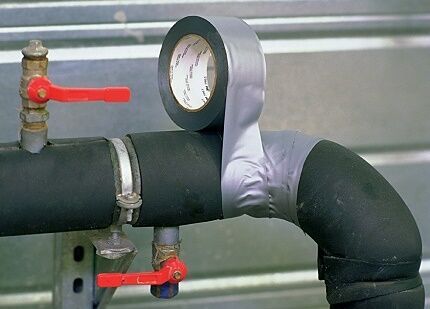
To ensure that the material does not lose its properties for a long time, it must be applied correctly.The surface preparation stage is very important. They are thoroughly cleaned of old coatings, degreased and dried.
It is necessary to monitor the uniformity and tension of the tape while wrapping the pipe and make wide overlaps equal to half the width of the material. If the tape is applied correctly, the surface will be covered with two protective layers.
Option #2: polymer sealants
Silicone sealants are most often used to treat the joints of sewer systems. Another option is polyurethane compounds. They are universal, suitable for sealing and gluing a wide variety of structures and elements.
Silicone sealants are indispensable for work in the bathroom - they are used for sealing joints between the bath, shower, sink with the wall.
Silicone contains rubber, which makes the finished material highly elastic and adhesion to any substrate. When using silicone sealants, it is not necessary to prime the surfaces to improve adhesion.
The optimal solution is to buy a special silicone-based plumbing compound, selecting it taking into account the material and operating conditions of the system.
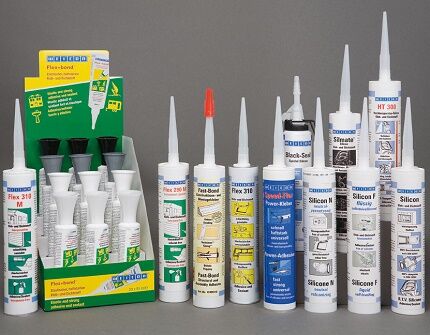
Depending on the composition of the hardener, there are two main types of silicone sealants:
- Acidic. The main advantage of acid compositions is reasonable price with good quality. The disadvantages include a limited scope of application: sealants are not suitable for all surfaces and can enter into chemical reactions.
- Neutral. These sealants do not contain acids, so they do not destroy pipes. This significantly expands the scope of application and makes the materials universal. The downside is the higher cost than acid formulations.
Silicone sealants are usually used to seal joints between plastic and metal sewer pipes. After polymerization, they form dense elastic coatings resembling rubber. Due to their high elasticity, they tolerate loads well and do not crack.

Sealants are applied using mounting guns that squeeze out the contents of the package. The joints are processed along the entire circumference. The line should be continuous so that there are no gaps. After applying the composition, the seam is carefully leveled with a special soft spatula or a wet gloved finger.
Repairing a broken pipe using an expansion pipe, coupling and sealant:
For the repair described above, instead of silicone sealant, you can use PVC pipe adhesive.
Option #3: technical sulfur
Technical sulfur is produced by processing petroleum products. It can be powdery or lumpy and is sold in hardware stores. This is a good option for sealing joints in cast iron pipes. An additional plus is the low price.

The sulfur is crushed (if lumpy sulfur is purchased), heated to the melting temperature (about 130-150˚C), and then poured into the bell space.
When the material hardens, it will turn into a dense, waterproof mass. Its only drawback is low elasticity.
Option #4: Portland cement
Portland cement is indispensable for many types of work. The material contains clinker, gypsum, and calcium silicates. The dry mixture is diluted with water until a thick solution is obtained. It hardens quickly, forming a high-strength, frost-resistant and water-repellent monolith.
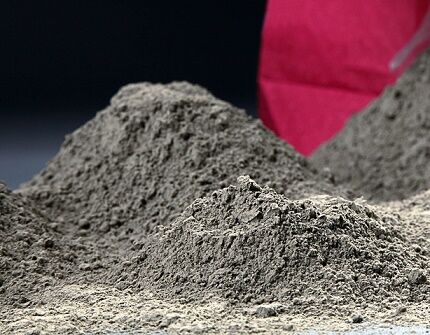
Special additives are added to the cement mixture to increase its elasticity - this allows you to reliably seal pipeline joints. The material is resistant to temperatures, tolerates freezing and unfreezing well, so it is successfully used when arranging outdoor sewerage from cast iron pipes.
Option #5: epoxy resin
Epoxy resin is a universal adhesive that can also help out when installing sewer systems. To prepare a sealing compound, epoxy resin is mixed with a hardener. The proportions depend on the brand of material and are indicated in the instructions for use.
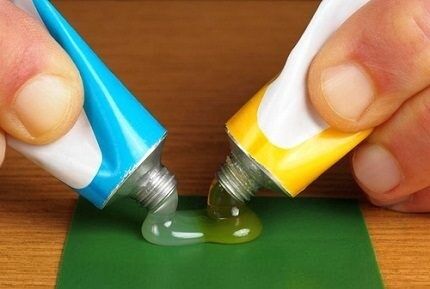
When mixing resin and hardener, it is important to strictly follow the manufacturer's recommendations, otherwise the hardening time of the composition and the performance properties of the finished coating may change.
Option #6: bitumen mastics
The sockets of ceramic pipes are often filled with bituminous materials. Bitumen-rubber and bitumen-polymer mastics have proven themselves to be excellent. Based on the type of application, they are divided into cold and hot.
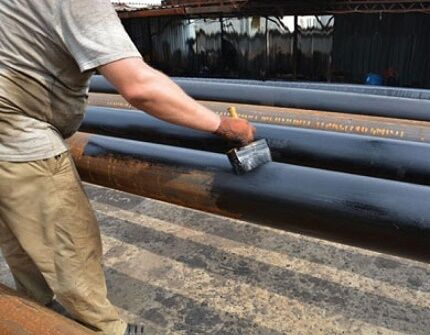
To seal pipes, it is better to use cold-applied compounds, because... they are much easier to use, and the work itself is safer. The only disadvantage of such sealants for sewer pipes is that they are somewhat more expensive.
Option #7: jute and hemp ropes
To seal the joints of cast iron and ceramic sewer pipes, hemp and jute ropes and resin strands are traditionally used. These are cheap and easy-to-use materials, but in terms of their technical and operational properties they are significantly inferior to modern sealants.

For sewer pipes, it is better to use sanitary silicone or polyurethane sealants. Their quality and durability can vary greatly depending on the manufacturer, so pay attention to brands and choose the most reliable ones.
Option #8: sealing cuffs
Durable cuffs made of thick technical rubber are used to protect the joints between the casing and the working pipe. They are applicable for pipelines of various types - technological, sewer, drainage. The diameter of the products is from 2.5 cm to 2 m.
There are different types of cuffs. The most common are TM, that is, heat-shrinkable, coated on the inside with an adhesive layer. To make the transition airtight, the rubber is heated. It shrinks and tightly grips the pipes, while simultaneously sticking to them.
Installation process:
In addition to TM cuffs, there are detachable MR and one-piece MG, which are not glued using a hair dryer, but are fixed with metal clamps.
8 best sealant manufacturers
Brand Sealants Ceresit And Moment out of competition. They are reliable, durable, highly elastic and adhere to any surface. If you have the opportunity to purchase formulations from these brands, do not hesitate, because... you will pay not just “for the name”, but for real quality.
There are 6 more brands that produce decent products:
- Ciki Fix. This brand produces high-quality transparent sealants that are perfect for metal and ceramic pipes. The finished coating is resistant to detergents and solvents.
- Belinka. These are popular one-component compositions for sealing seams and joints. They are resistant to negative influences, durable and elastic.
- Tytan. The Tytan brand produces high-quality sanitary sealants based on silicone. If you need a high-strength seam, you should give preference to the Tytan Professional polyurethane composition.
- Krass. The Krass brand produces fast-curing, one-component sealants, which, after hardening, form tight joints that do not shrink.
- S 400. A distinctive feature of sealants of this brand is increased biological stability. The composition includes a large number of fungicides that prevent the appearance of fungus and mold on the seams.
- Dow Corning. The sealants of this brand hold surfaces together so firmly that they are used as glue. They are thicker than compounds of other brands and penetrate deeply into seams and joints.
Sometimes sealants are subject to increased requirements for certain performance characteristics. In such cases, it makes sense to carefully study the manufacturers' descriptions and consult with sellers.
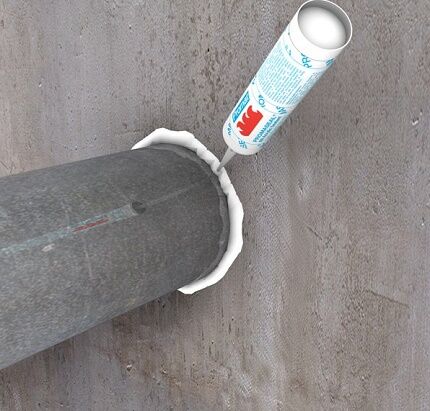
For example, the best sealant for rooms with increased fire hazard is a universal composition Krass; for complex connections - "Moment Germent"; for ceramic pipes – Belinka Belsil Sanitary Acetate; and for rooms with constant high humidity - Ceresit CS 25 or S 400.
Conclusions and useful video on the topic
During the process of sealing a sewer system, many questions arise. We offer video materials that will help you cope with difficulties and complete all the work yourself.
Instructions for sealing sewer pipes using silicone sealant:
We offer video instructions on how to properly mix epoxy resin and hardener:
Do-it-yourself video tutorial on sealing the socket of a cast-iron external sewer:
Detailed instructions for sealing the socket of sewer pipes when switching from cast iron to plastic:
Whatever type of sealant for sewer pipes you choose, you need to carefully prepare the surfaces and perform the work efficiently. There should be no cracks or fistulas on the pipes. Before sealing, they are cleaned, repaired, and degreased.
When working, you should strictly adhere to the technology, and after finishing it, wait the allotted time until the composition hardens. Only after this the system can be operated normally.
Do you have experience sealing sewer pipes? Please share information with our readers and suggest your method of solving the issue. You can leave comments in the form below.




During the renovation of the apartment, we purchased a German liquid sealant, which, when hardened, formed a white rubber-like film. It was sold in small buckets, like mayonnaise. It was very expensive. Apply several layers to all joints with a brush. This deep penetration sealant can withstand high pressures and is used for sealing tunnels.
When I built my house, I made a drainage hole in the yard; there is basically no sewage system in the village.On the street I used ordinary PVC pipes, coated the joints with silicone sealant, and wrapped it with foil self-adhesive tape on top for reliability. And that’s it, they carefully laid it out and buried it. Everything has been working for several years now, there are no leaks, in a word - simple and reliable.
How can you reliably seal polypropylene sewer pipes in an apartment? Yes, yes, polypropylene, PP is written on the pipes, either Russian or foreign (PP). Silicone sealants do not stick properly; after drying, they are easily removed with your fingers, like jellied meat. And in general, I read that very few things stick to them normally.
Did you prepare the surface of the pipe before applying the sealant? It is imperative to clean and degrease before applying silicone sealant! If you have not done this, then the tightness of such a connection is a big question. It is possible that you came across a low-quality silicone sealant.
In general, it is better to use Russian lubricant for installing plastic pipes MasterPlast, I advise from personal experience! Also, do not forget to process the edges of the pipe before the joint (I am attaching a photo) so that the torn edges do not displace the rubber seal, which actually breaks the tightness.
Installation of modern sewer systems does not require the use of additional sealing agents other than the standard O-ring. It is enough to prepare the edge, apply lubricant to it and insert it into the socket (from the ostendorf installation instructions).
“Silicone contains rubber, thanks to which the finished material is highly elastic and adhesion to any substrate. When using silicone sealants, there is no need to prime the surfaces to improve adhesion.”
Lies. No glue has adhesion to polypropylene and polyethylene without a special expensive primer, except polyurethane. I'm tired of this.
Hello everyone! Save - help! These are the cracks that formed in the old cast iron riser. I might not have noticed it before, because... the pipe was painted black. I can't say with certainty when they appeared. There are no leaks, but there are very few residents upstairs. What should and can be done in my case?
The bathroom renovation was done a year ago. The house is 3 floors, mine is the 2nd floor. The house is 55 years old (Stalin), the riser is cast iron. The opinions of specialists were divided 50 to 50 (change and use sealant or cement, etc.). Help with advice. I read about Geogel 2300, but you can only buy it in Ukraine. Thanks if anyone answers...
I also read about this sealant - Point. Can it be used to “repair” cracks in a cast iron riser?
If you are still reading... Alternatively, cut out this section and install plastic, another option is regular or cold welding
Everything written above is nonsense. The house was built in 1986, polyethylene sewer pipes with a socket, if there is a blockage below, the slops flow like a river. What to seal with?